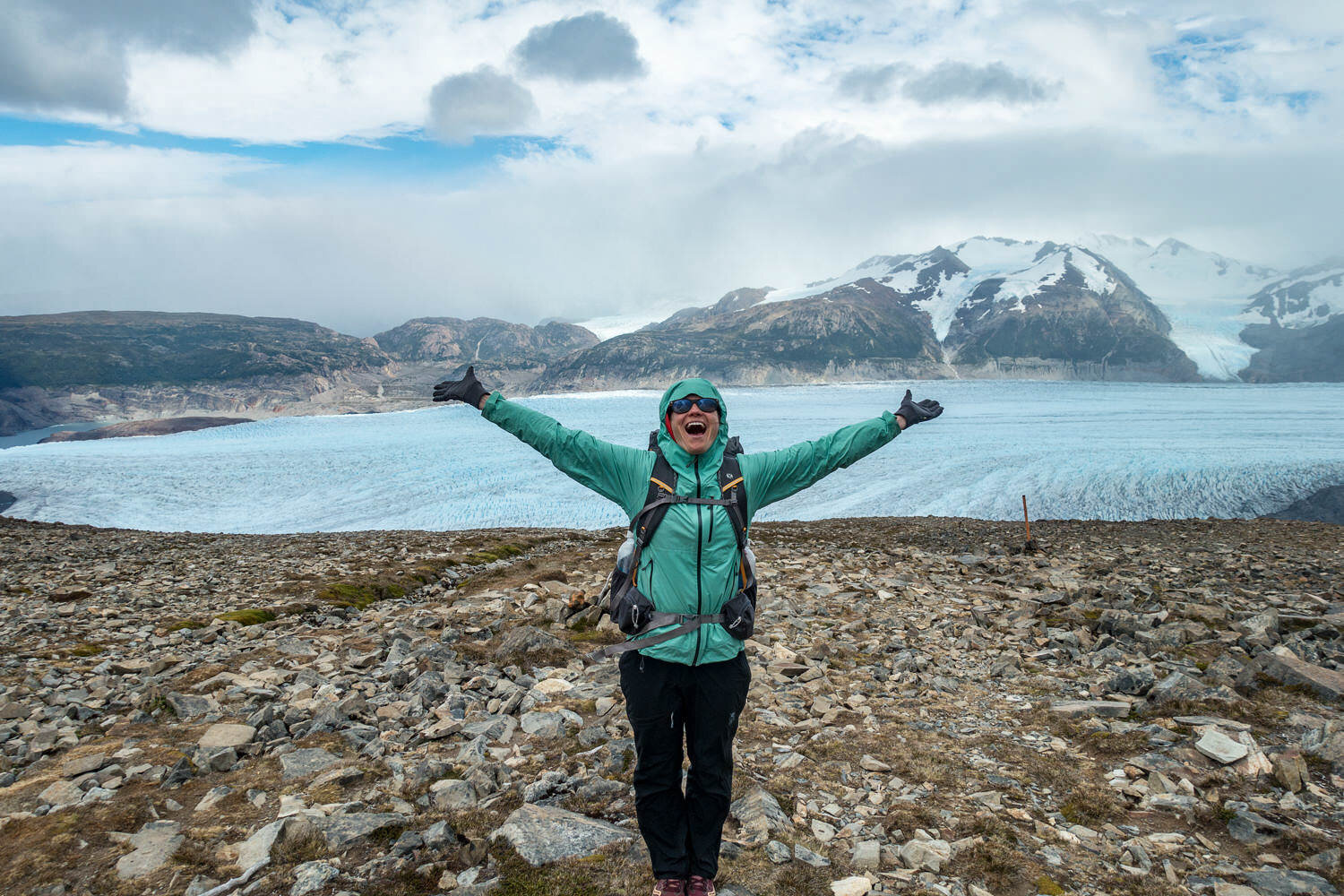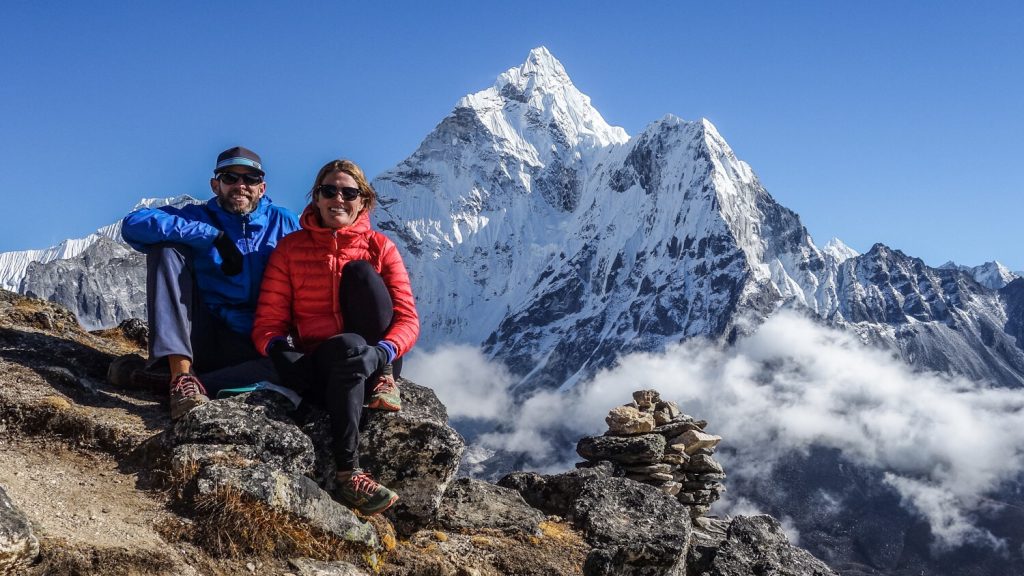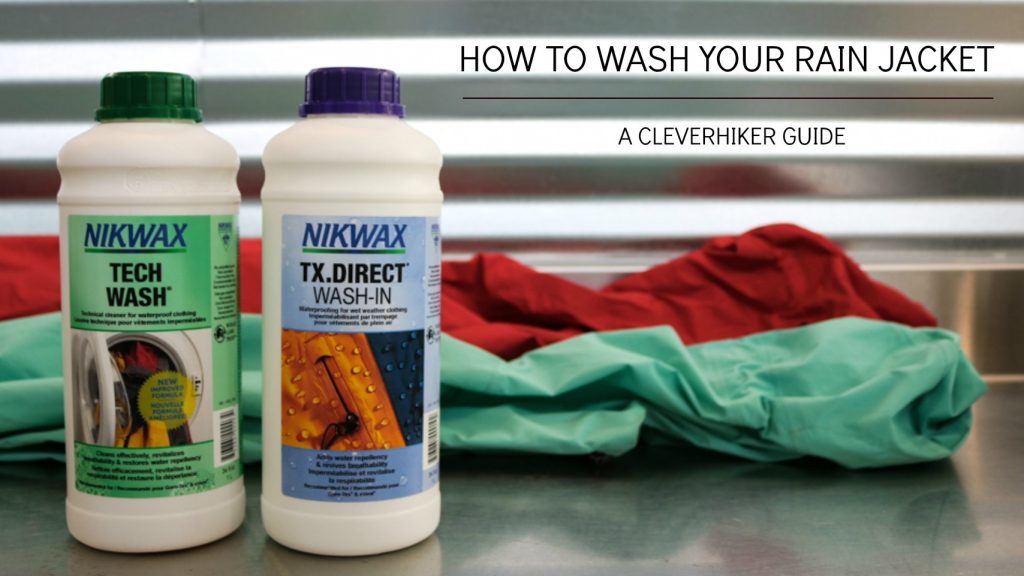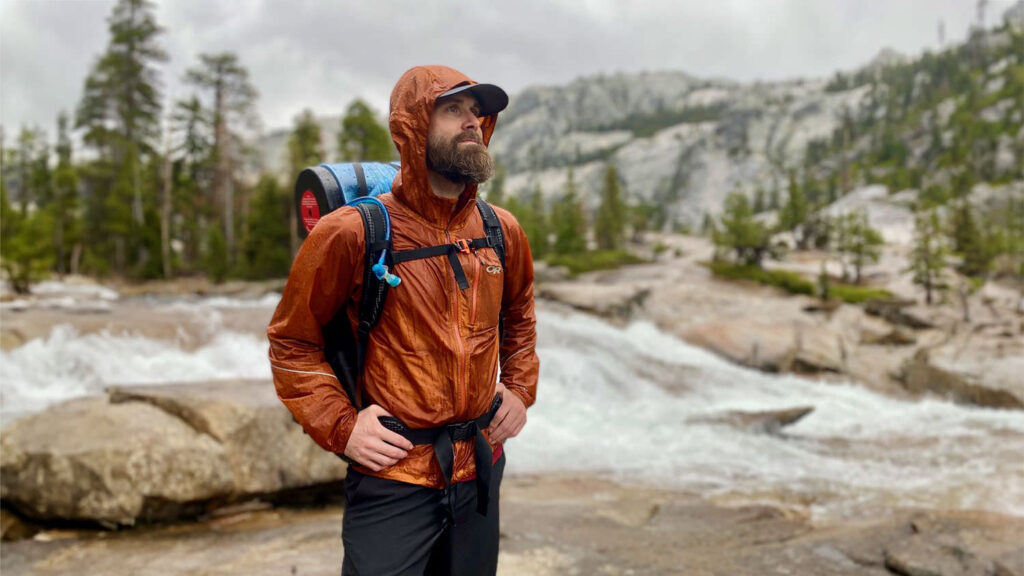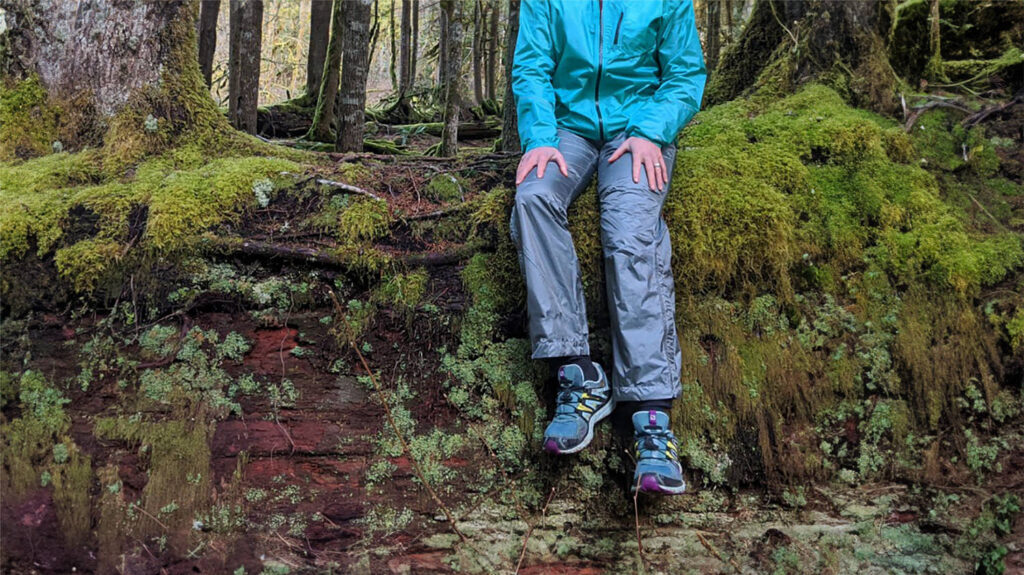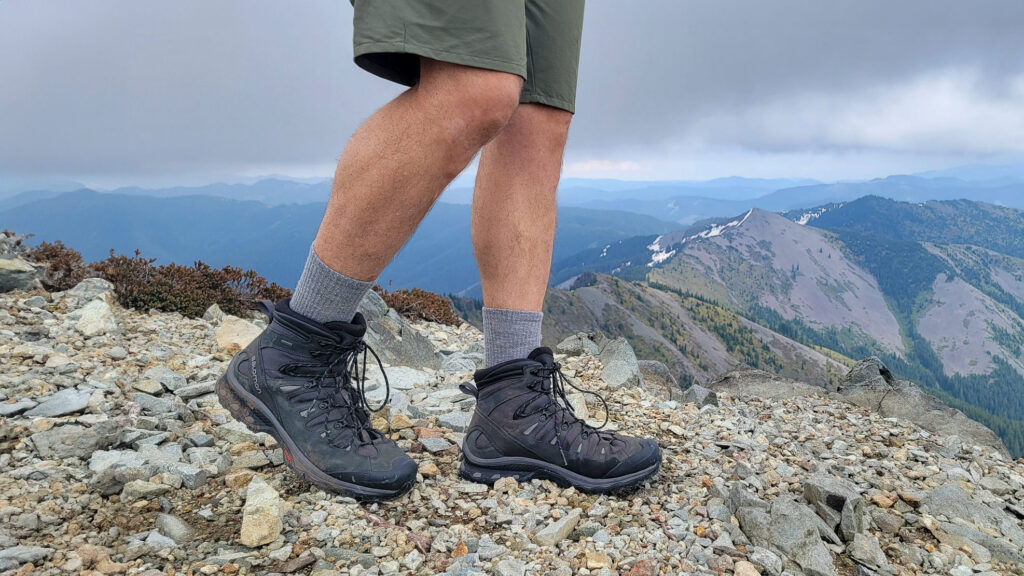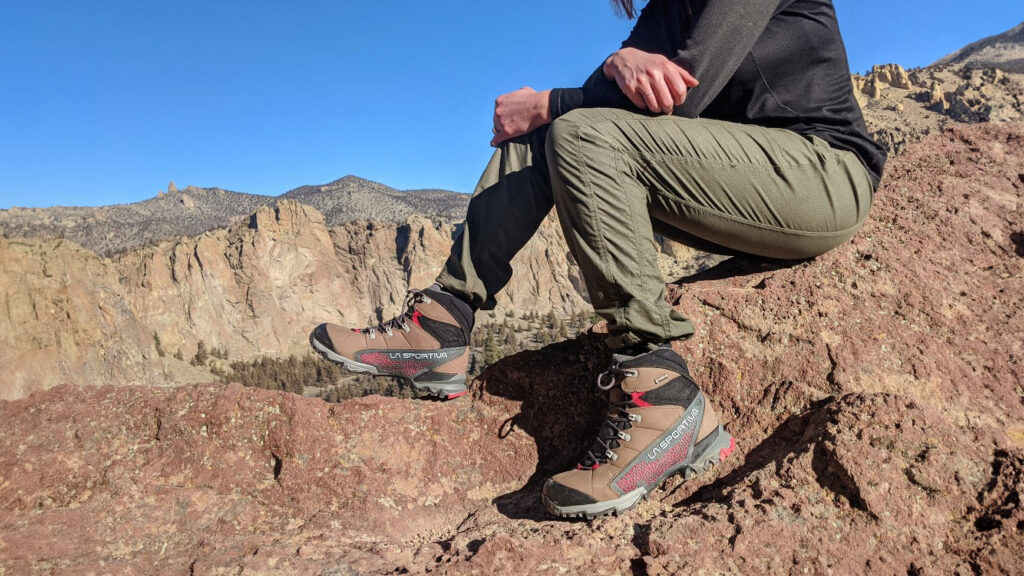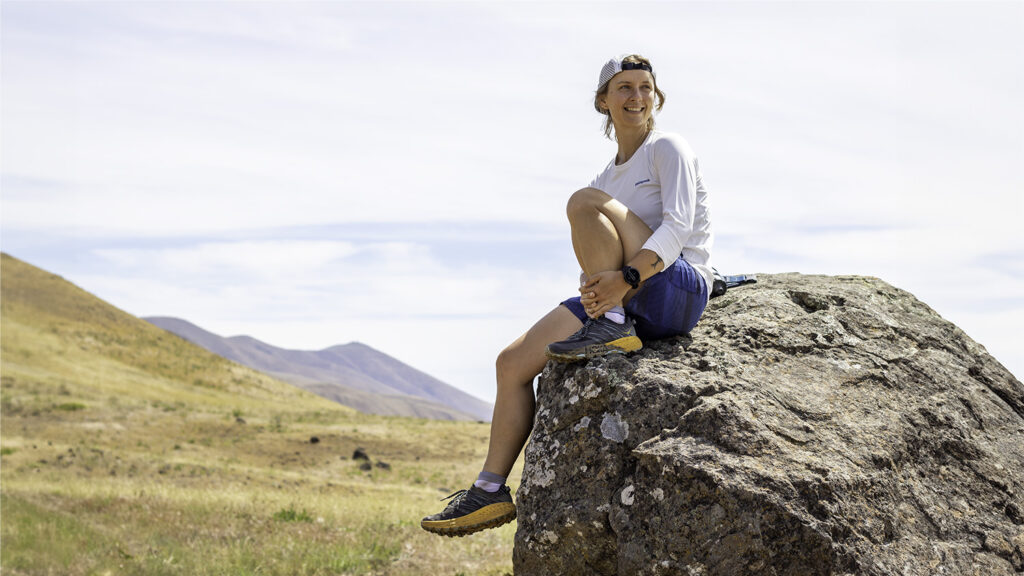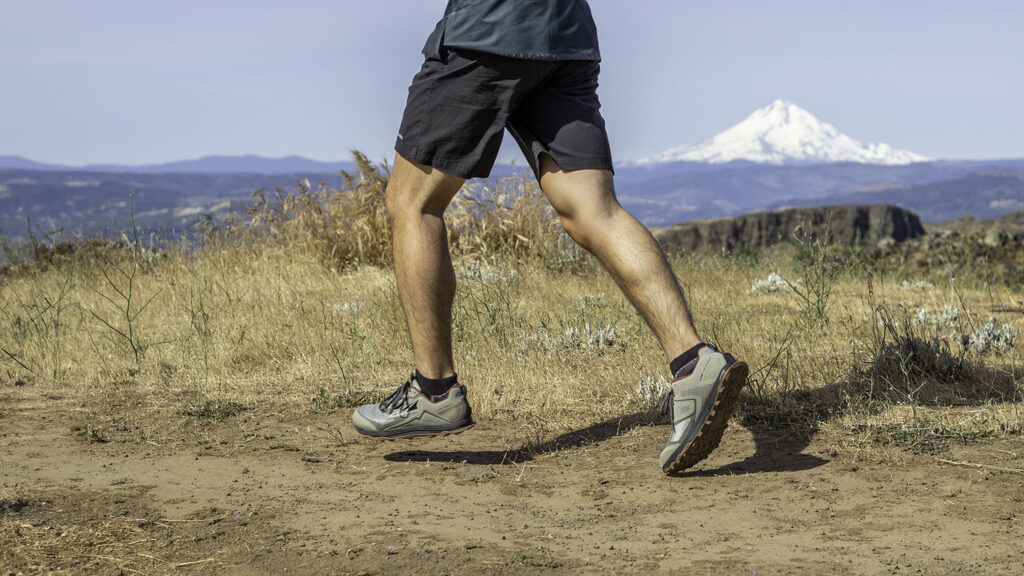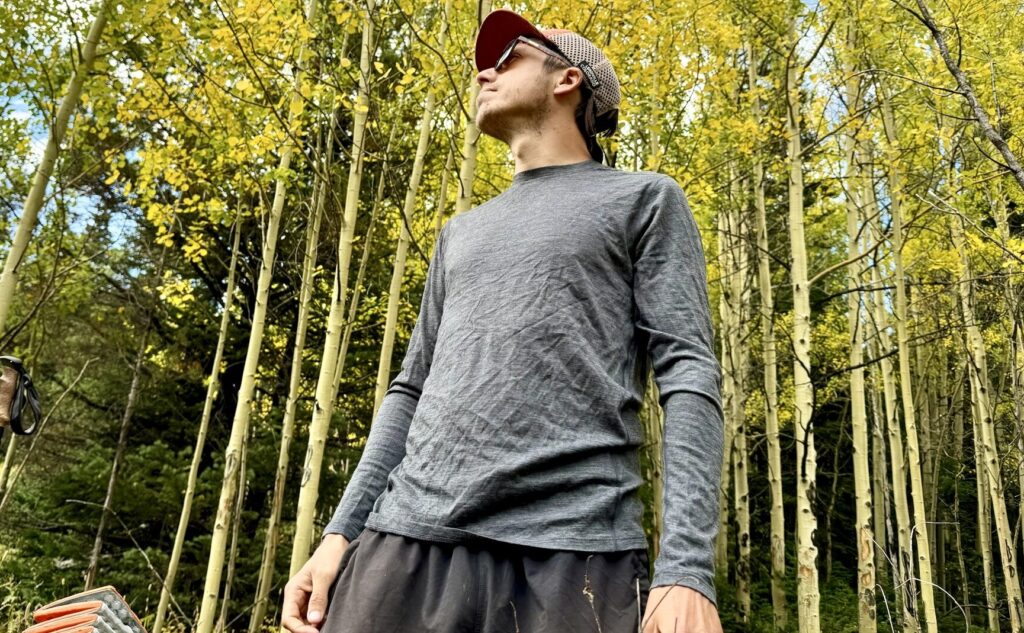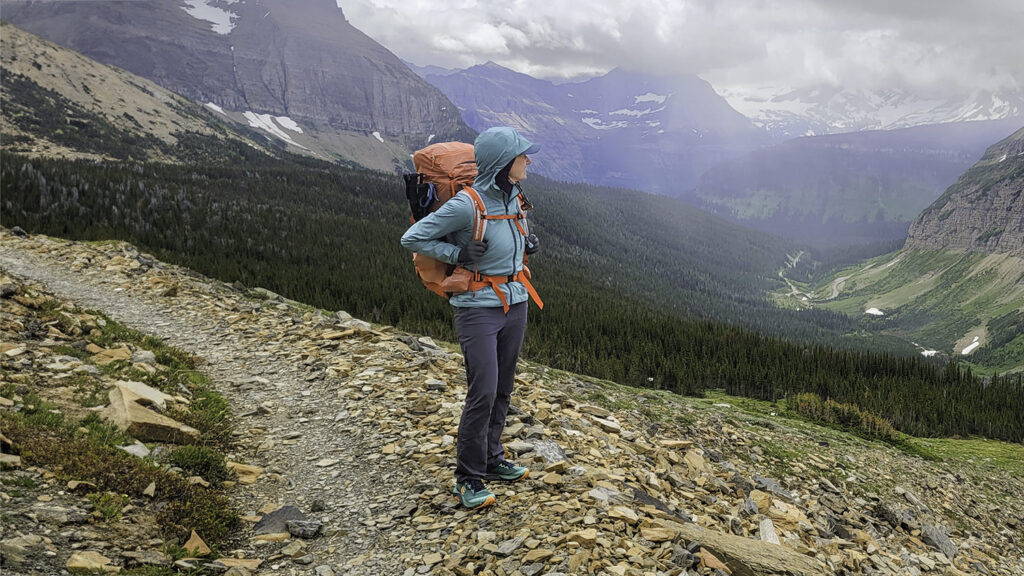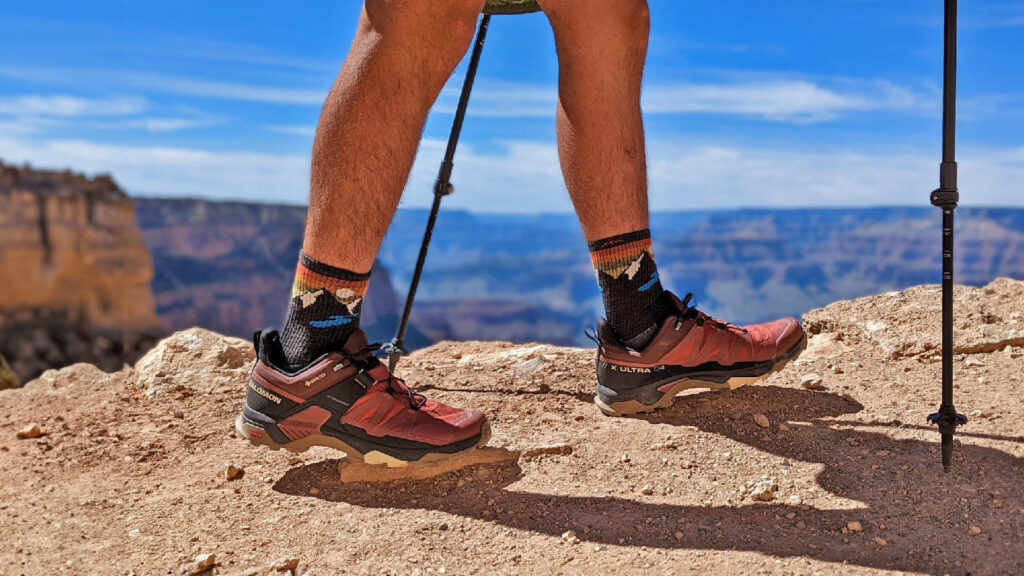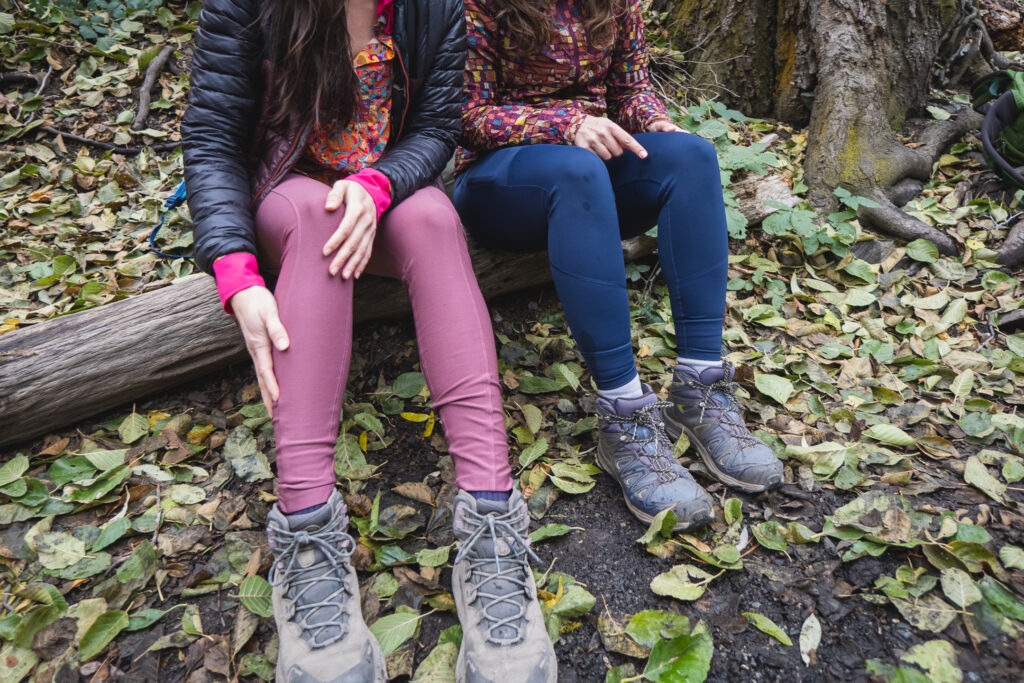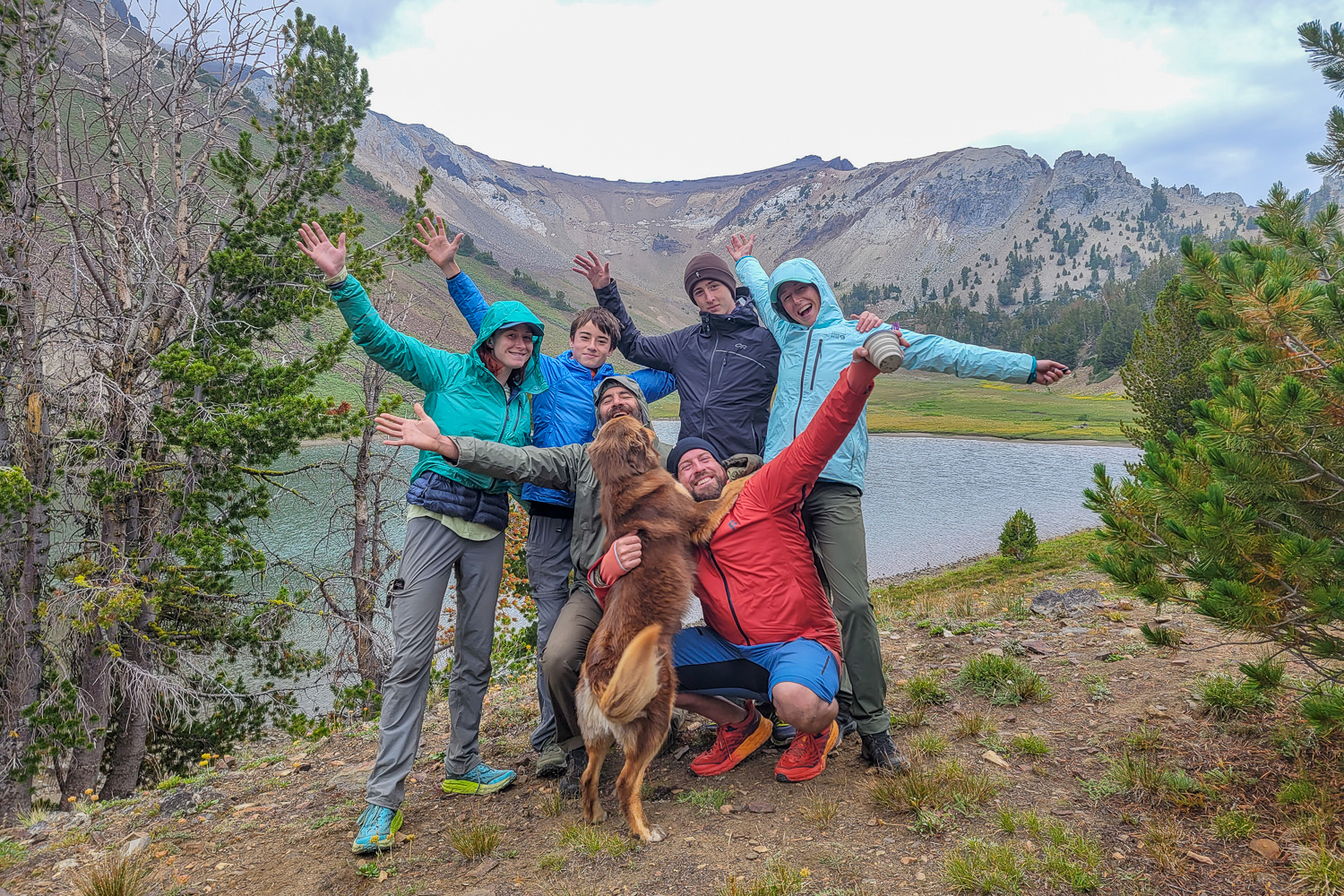
Rain is a feature of many backpacking trips that most people would rather avoid. Though we can’t control the weather, we can control the gear we bring. With that in mind, we have some hard-earned tips and tricks that make a wet hike just a little more enjoyable. So don’t let a drizzly forecast stop you from being active and immersing yourself in nature. The right mindset and quality rain gear make all the difference.
Whether you’re day hiking or backpacking for multiple days, this article will help ensure your experience is a safe and enjoyable one.
1. Dress In Layers
Layers allow you to thermoregulate more effectively, even when it’s wet. Make sure your jacket can fit over a base layer and a down puffy and/or fleece. Having enough room will ensure you stay warm and comfortable when it’s wet and cold, whether you are on the move or hanging out at camp. Similarly, it’s easier to overheat with a rain jacket. Even the most breathable waterproof layer is going to trap sweat but some jackets do it ventilation and breathability better than others.
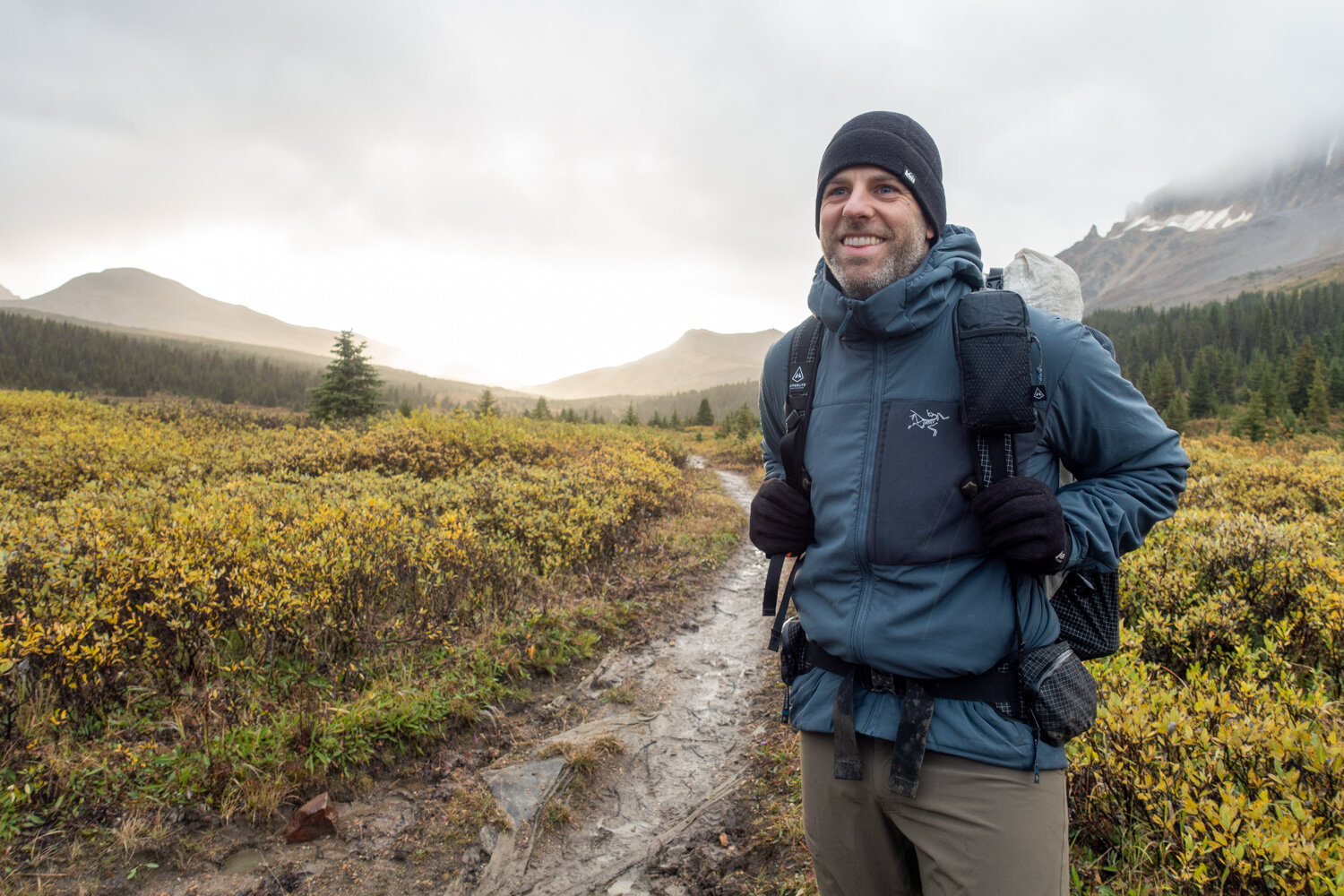
What does a clothing system for rainy hiking look like?
- Summer: Running shorts or hiking pants, a lightweight synthetic t-shirt, a lightweight rain jacket, rain pants (unless the weather is really warm), and a baseball/trucker hat to protect your face from drips.
- Fall, winter, and spring: Hiking pants, a long-sleeve base layer, rain jacket, rain pants, and a baseball/trucker hat. Depending on how wet/cold the forecast is, we also often bring a warm hat, a fleece pullover, and gloves.
- Camp clothing essentials for backpacking: We always save a dry down jacket, a pair of base layer pants, a warm hat, and a pair of cozy socks for use in camp and for sleeping.
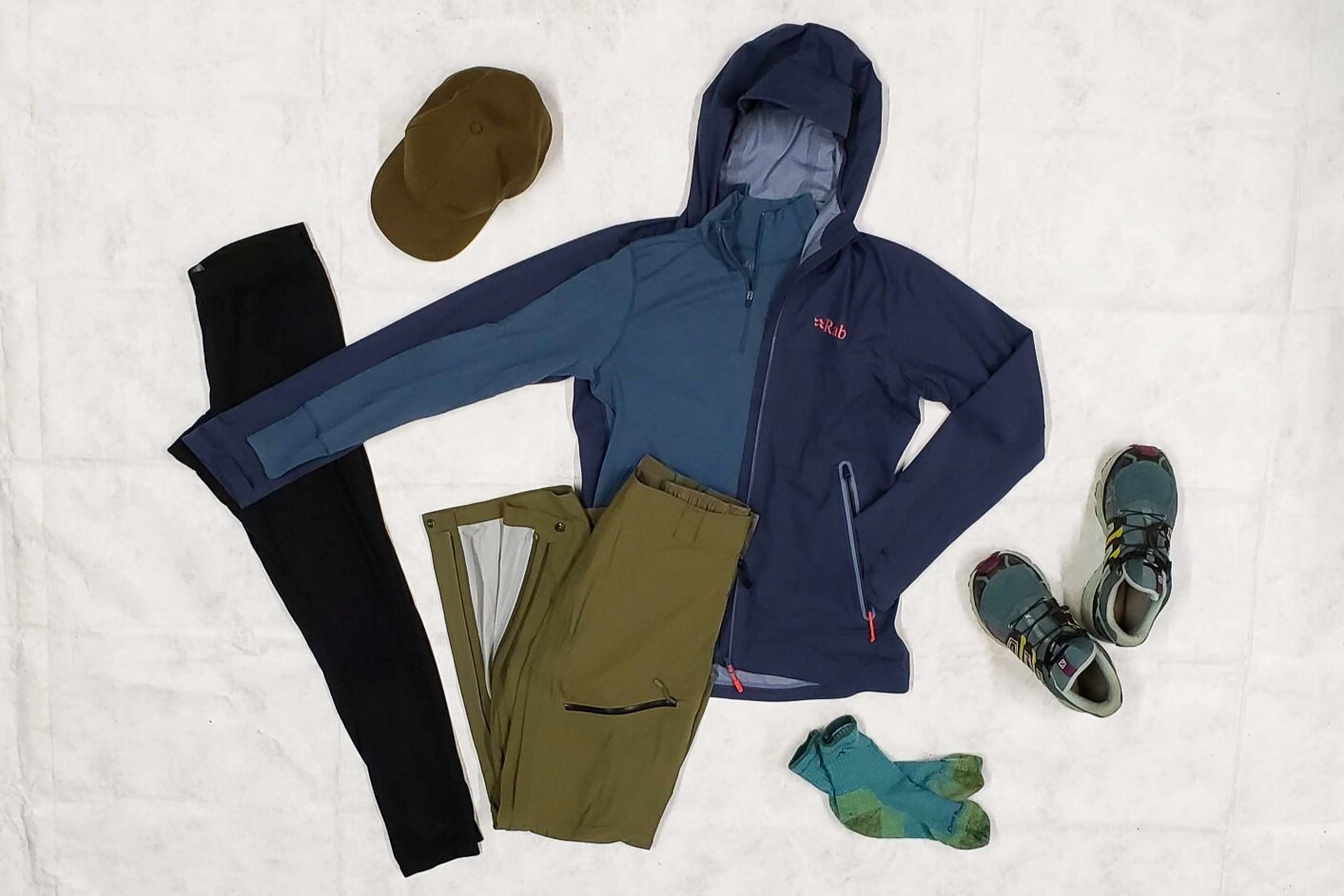
2. Choose The Right Fabrics
Warm, humid weather means contending with both sweat on the inside of your clothing and precipitation on the outside so it’s really important to wear clothing that dries quickly. Synthetic fabrics, like polyester and nylon, wick moisture away from the skin and are generally pretty durable and affordable. Natural fibers, like wool, keep you warm even when wet are naturally antimicrobial, and help minimize odors over a longer trip. Avoid cotton. It stays wet for too long and holds moisture against the skin, which draws away your body heat much faster, potentially leading to hypothermia. It’s also uncomfortable when wet and can cause chafing, and blisters.
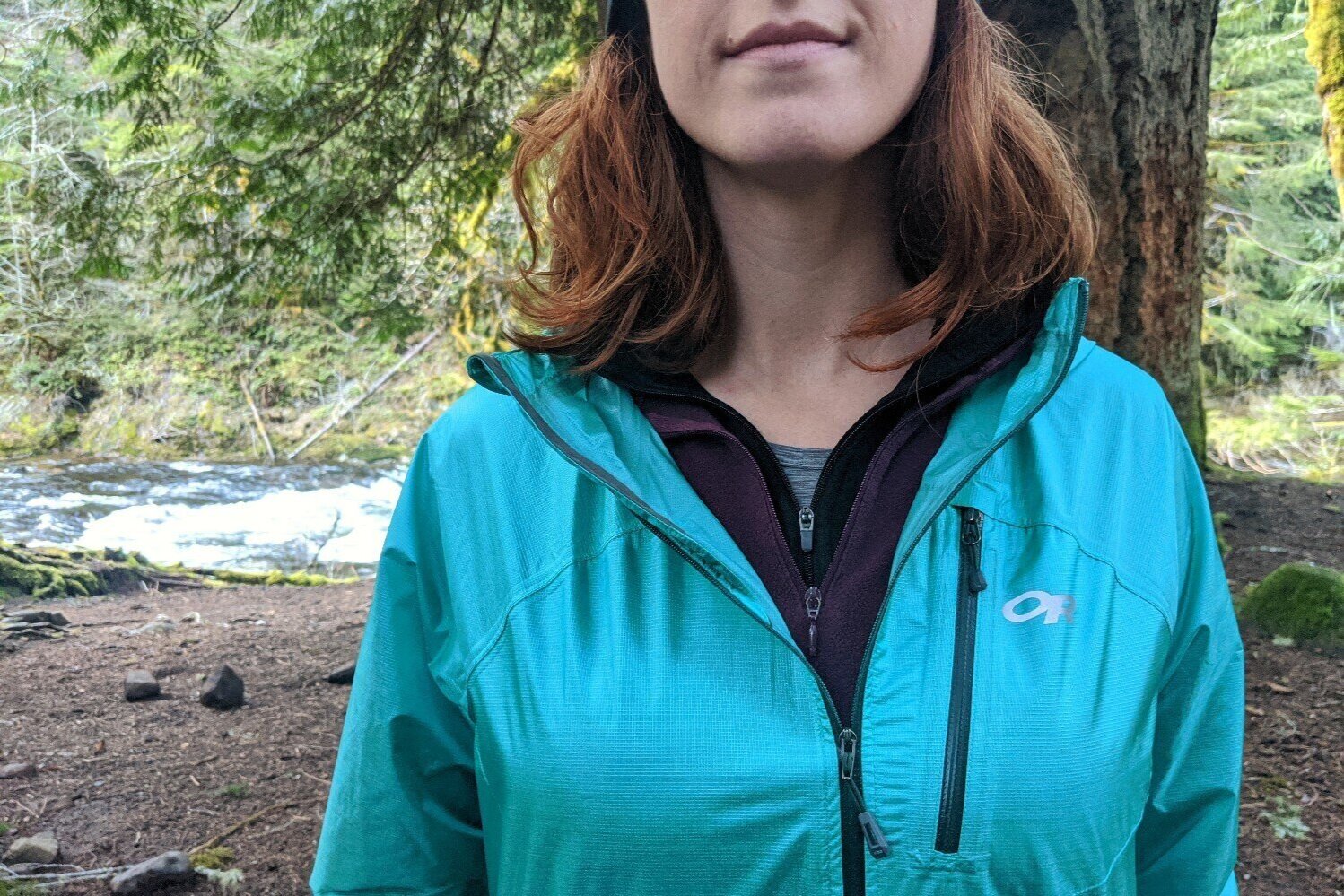
3. Choose Footwear Wisely
Waterproof shoes and boots are warmer and can be much more comfortable for wet day hikes, especially during cool seasons like fall, winter, and spring. That said, waterproof shoes don’t breathe as well and they tend to dry slowly if they get wet. If you choose waterproof footwear for a multi-day backpacking trip, consider bringing lightweight camp shoes you can put on for water crossings. If you choose non-waterproof footwear for rainy trips, wear wool socks to keep your feet warm, prepare to keep moving when you’re cold, and always bring an extra pair of thick socks to change into at the end of the day.
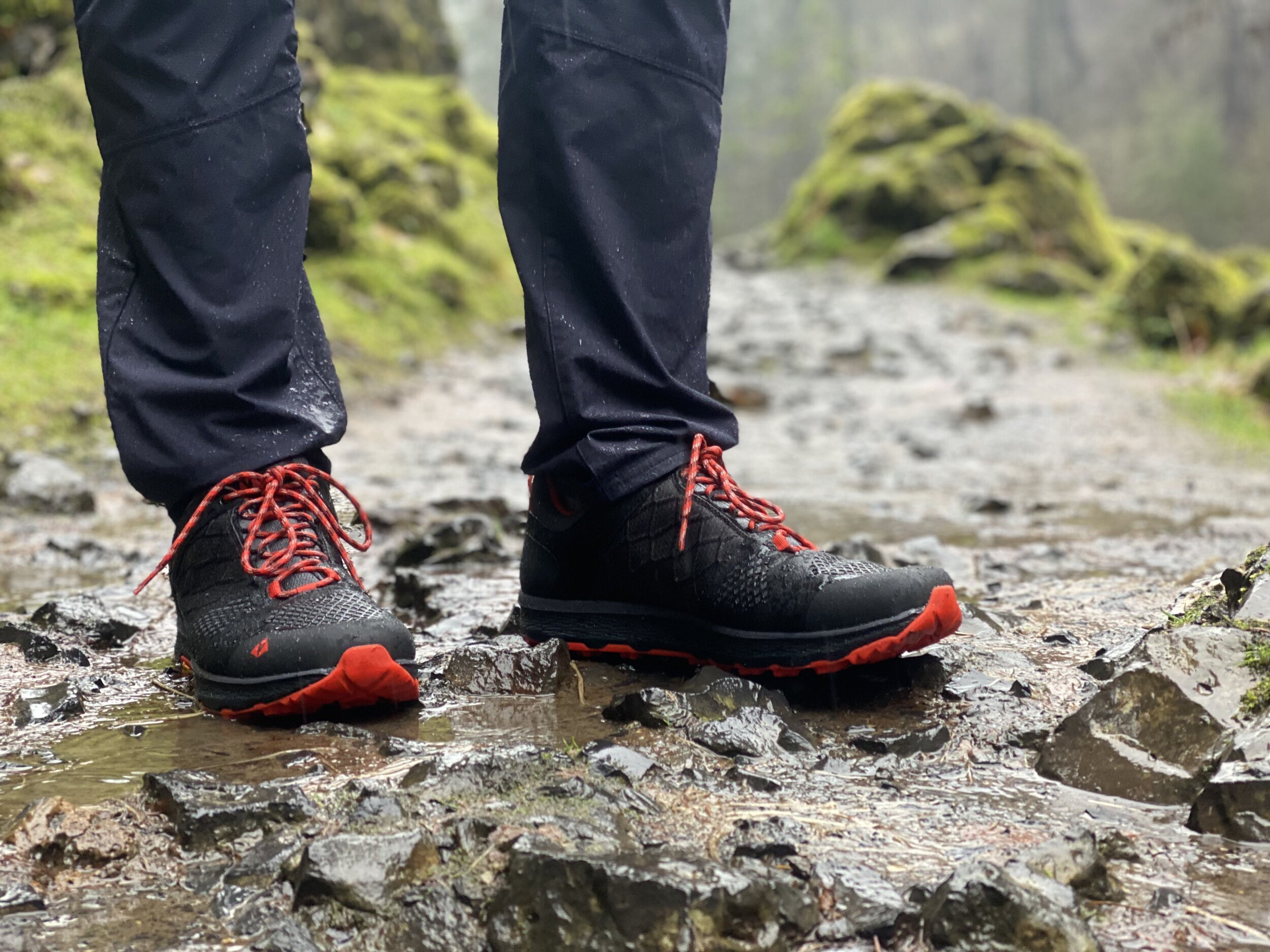
4. Invest In Good Socks
High-quality hiking socks make a world of difference in how well your feet hold up in wet conditions. Synthetic or wool socks help keep your feet as dry and comfortable as possible when you’re on the move. We usually bring two pairs of thin or medium-weight socks to cycle between while hiking and a pair of warmer socks reserved for camp. If you prefer non-waterproof shoes, waterproof socks are an option to help keep you warmer and drier. We only recommend waterproof socks for short outings though, since your feet may overheat in them and they aren’t easy to reuse for multiple days without washing.
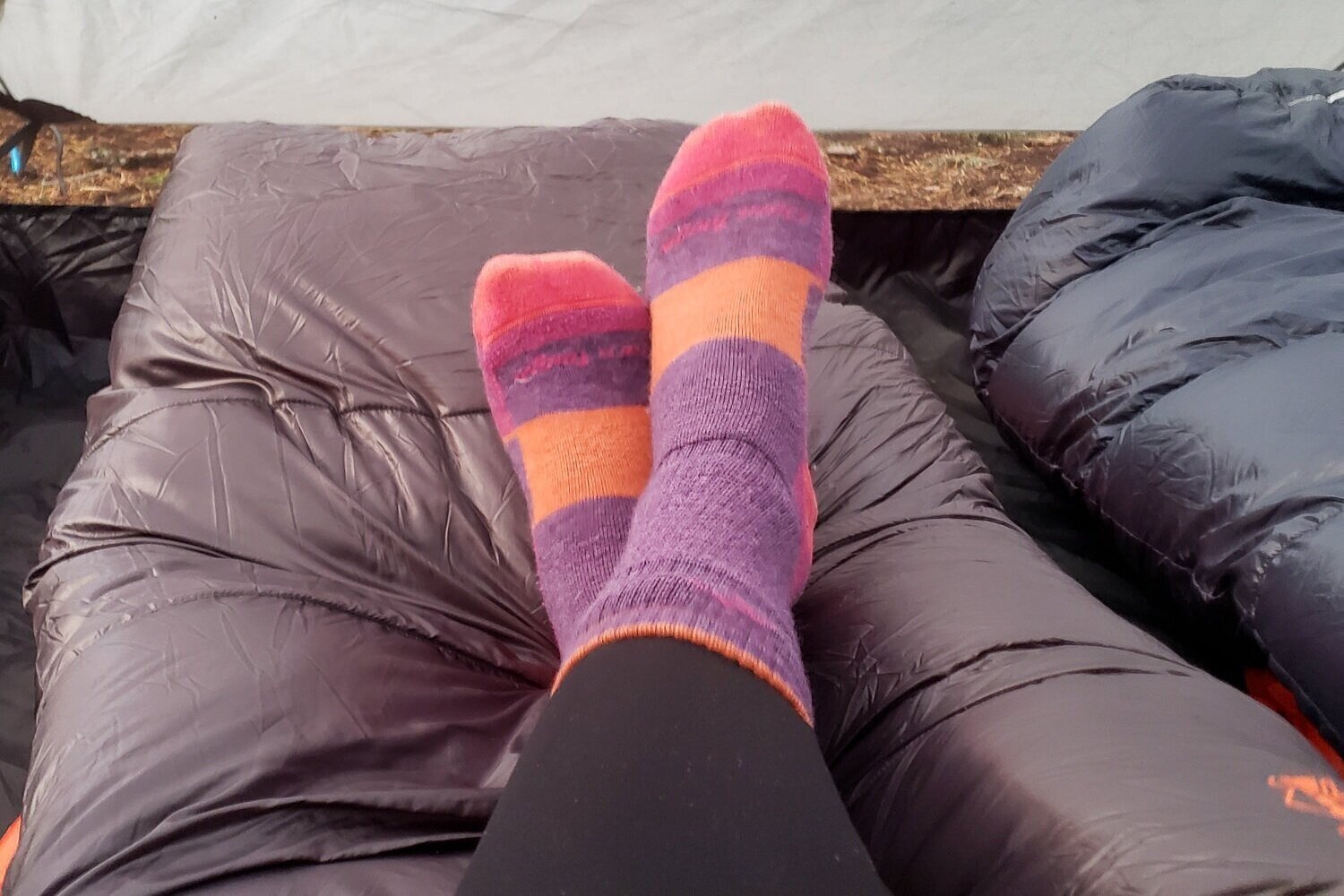
5. Use A Backpack Liner
Most backpacks aren’t waterproof, so your stuff will need to be protected from the elements. There are pack covers that go over the outside of a backpack and pack liners that go inside and function as a large dry bag. We find that pack covers leave too much of your backpack exposed and tend to pool and channel water toward spots that aren’t covered, leading to seepage. Bottom line: they just aren’t effective enough at keeping gear dry. On the other hand, liners are essentially plastic trash bags, so they are 100% waterproof (assuming they are rolled closed well and don’t have any holes). Your pack will get wet, but your gear will not. For really important items like your sleeping bag and sensitive electronics, we like to use a waterproof stuff sack or two as well.
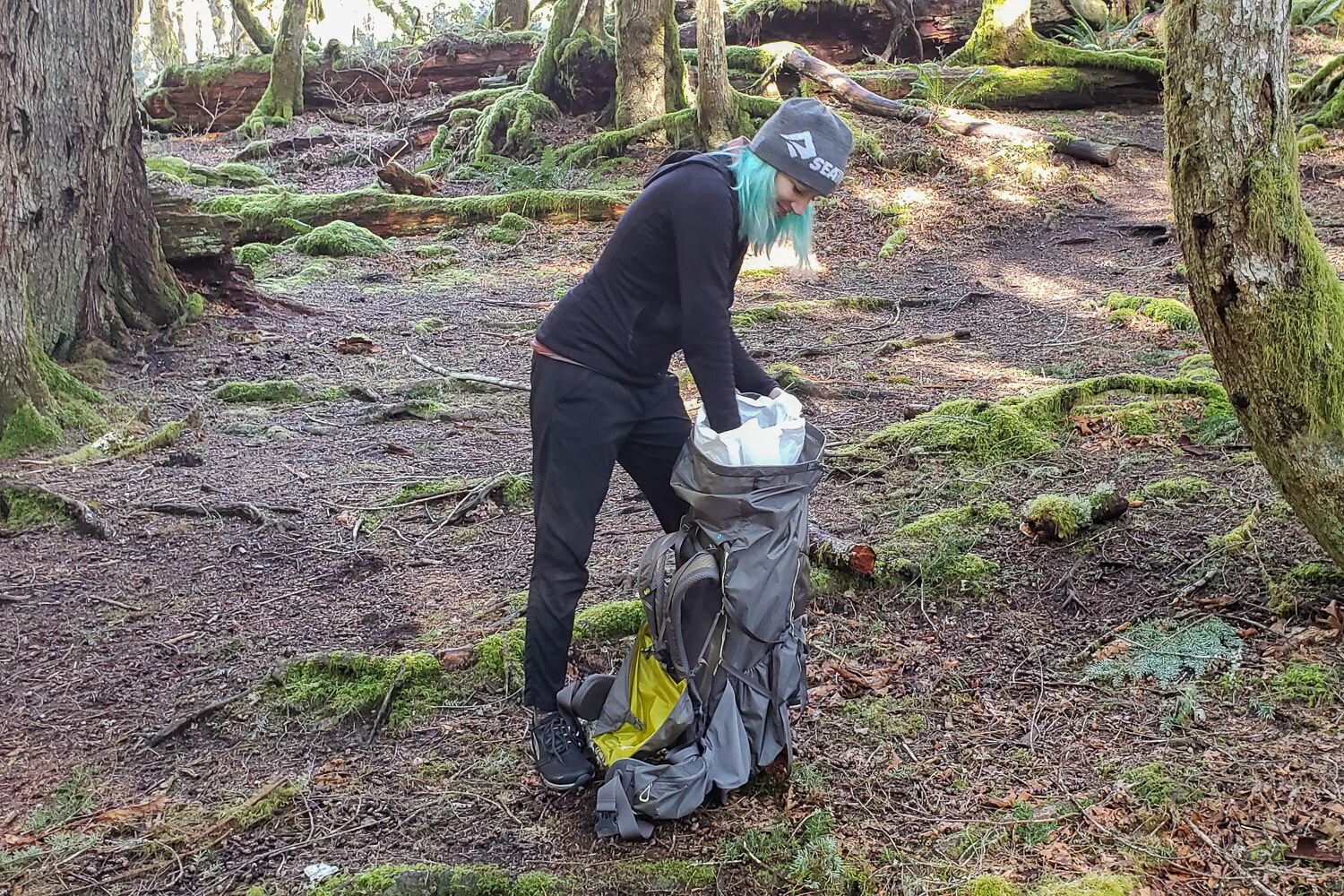
The Most Waterproof backpack
We love the HMG Southwest backpack for multi-day trips in wet conditions because the DCF fabric and taped seams make it one of the most weather-resistant packs we’ve ever tested. If you pair the Southwest with some of HMG’s waterproof stuff sacks/pods, you’ll have an almost completely waterproof system that’s super lightweight and organized for convenient access.
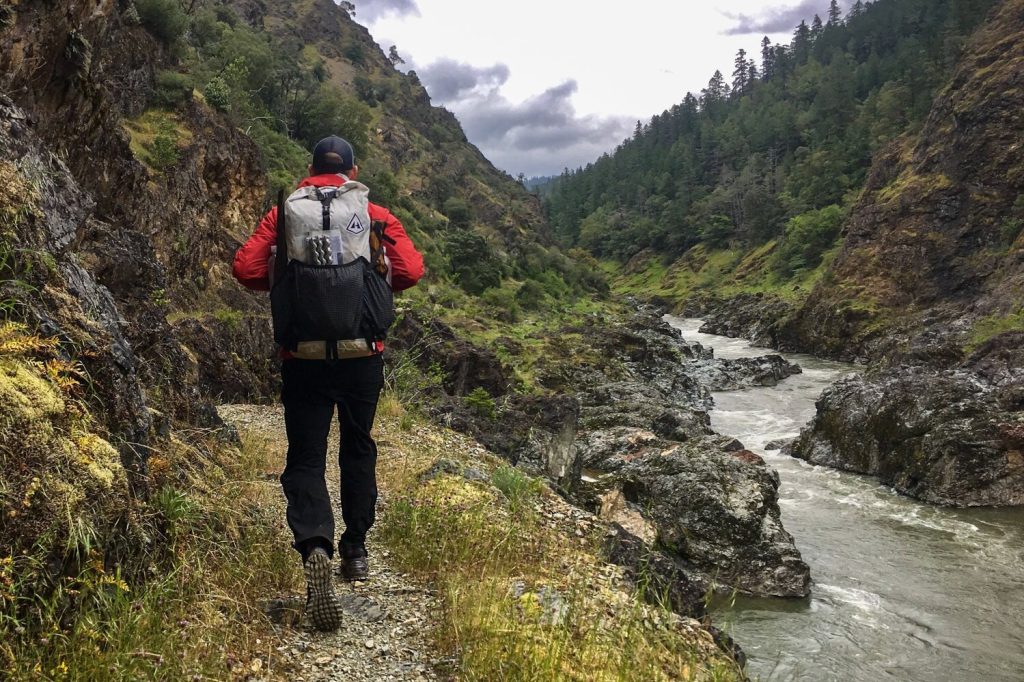
6. Keep your Rain Gear & Shelter Accessible
If the sky looks ominous, keep your rain jacket and rain pants somewhere you can access them quickly without having to expose your dry stuff. When there’s a good chance of rain, we keep our rain gear right at the top of our backpacks or in an exterior pocket so we can easily grab it when we need it. If our tent is wet in the morning, we generally shake it out and store it inside our backpack outside of our waterproof backpack liner that contains our other dry gear. If the sun comes out during the day, we take a snack break and spread out the tent so it has a chance to dry.
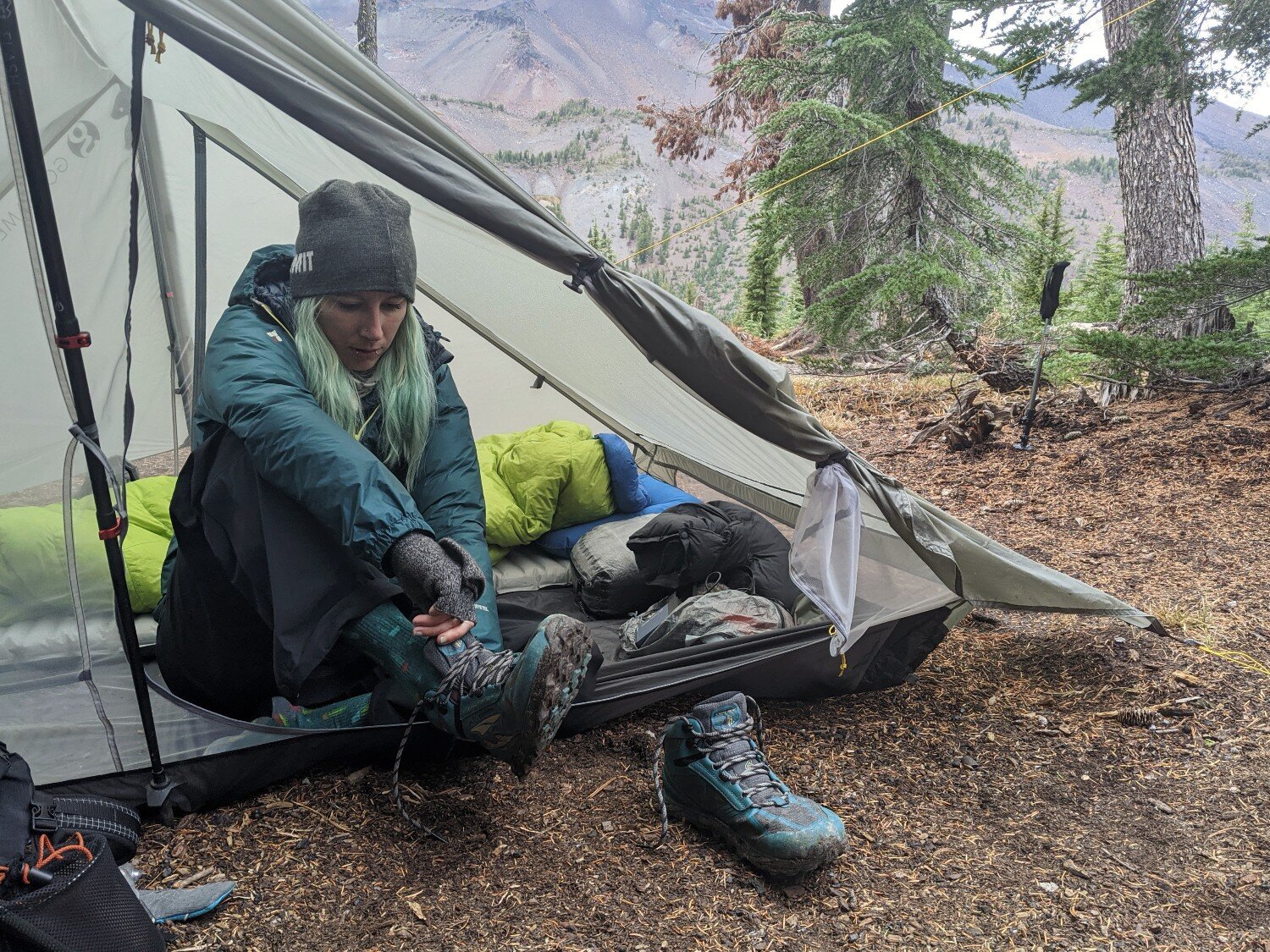
7. Protect Important Items
When it comes to backpacking, it’s especially important to keep your gear dry in wet conditions since dry clothing, a sleeping bag, and your electronics are your insurance in the backcountry. Use redundant systems (i.e. a pack liner and a waterproof stuff sack) and reserve some clothing exclusively for inside your tent to ensure you have relief from the elements and you can sleep comfortably and safely. This often means you’ll have to start the next day by putting on cold, wet clothing and shoes from the day before, but don’t worry, you’ll warm up quickly once you get moving. As uncomfortable as that can feel, we promise it is better to have dry clothing when it’s time to crawl inside your tent again in the evening.
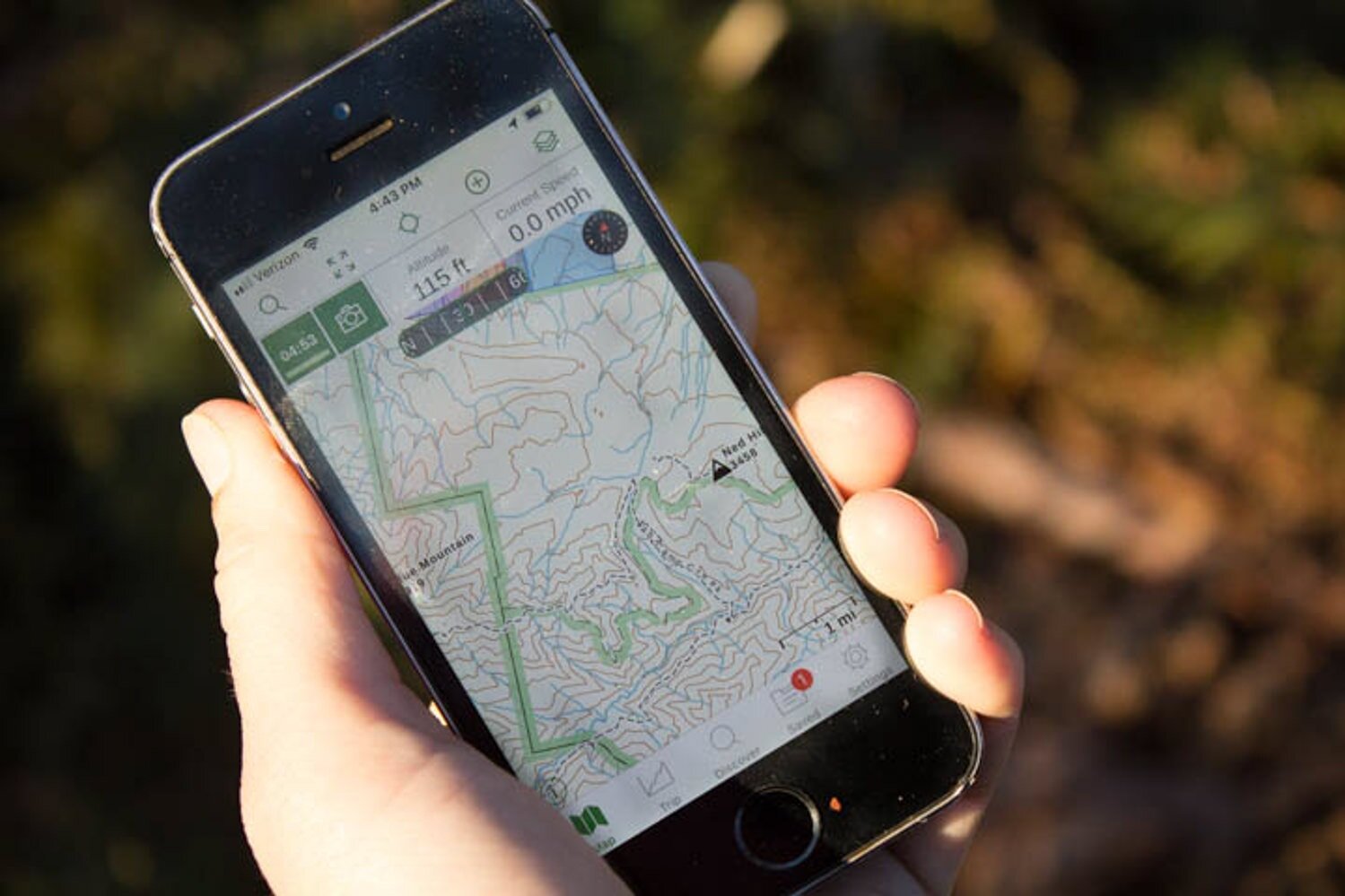
8. Use Opportunities To Dry Out
Something’s bound to get damp on multi-day trips in the rain, even if you try your best to avoid it. After all, you have to open your bag eventually. Fortunately, most outdoor clothing and gear is made to dry quickly. We usually bring a large safety pin to attach wet socks to the outside of our backpacks so they can dry, or at least air out, as we hike. We also pull damp gear out of our backpacks to dry if the sun pops out during breaks or meal times. Even a few minutes of direct sunlight helps a lot (and water is heavy so it reduces weight too if you still have more miles to hike). It’s also a good idea to let your feet dry out at night and once or twice throughout the day if possible to avoid blisters.
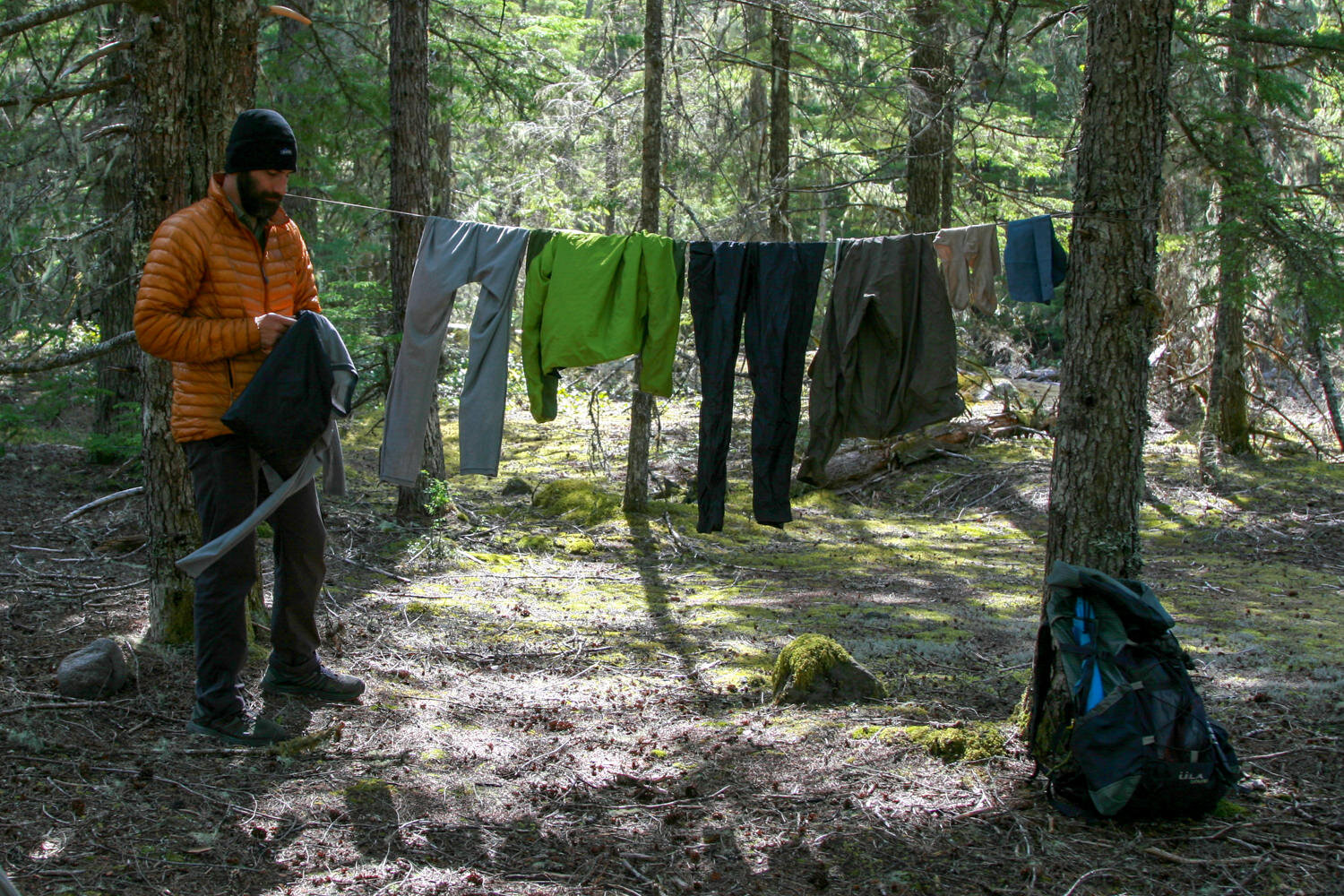
9. Bring An Umbrella
Though it is one of the first things that comes to mind for rain protection in the frontcountry, umbrellas are more common in the backcountry for shade in desert conditions than stormy ones. However, a lightweight umbrella like the Six Moon Designs Silver Shadow is a piece of gear we would never go without on a wet trip. An umbrella is an easy “layer” to take out or stash away while on the move and it won’t retain body heat like a rain jacket. Seriously, using an umbrella in conjunction with a rain jacket is one of the best gear decisions we’ve ever made.
And though should be said that these umbrellas don’t work well in extremely windy conditions and should not replace proper clothing, the technology is improving and they make hiking in the pouring rain far more comfortable. We strongly recommend giving it a try to see if it works for you.
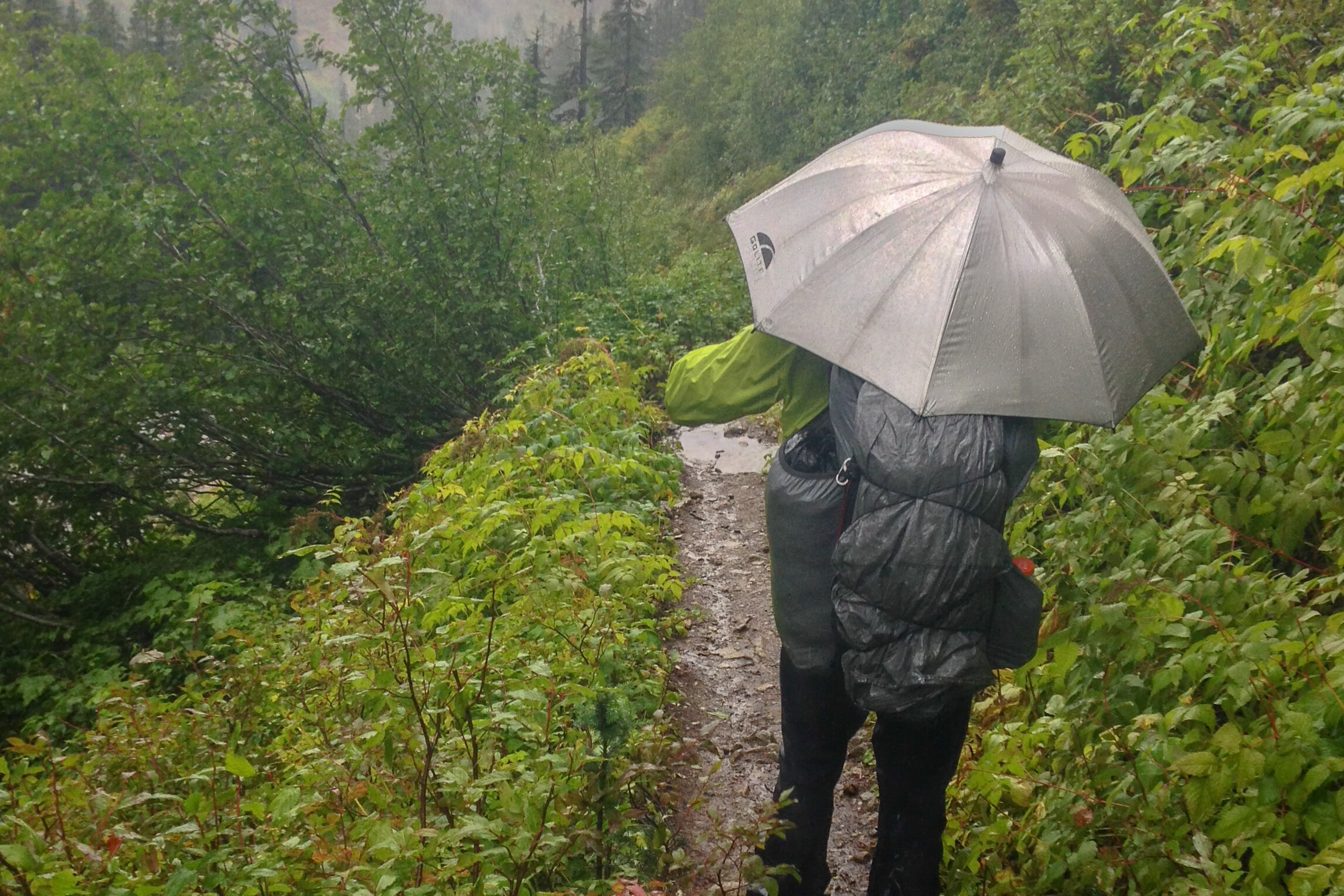
10. Have A Positive Attitude
Having a positive outlook and a sense of humor makes hiking in rainy conditions much more enjoyable. You might be a bit uncomfortable at times, but stormy trips tend to be some of the most memorable. An extra dose of enthusiasm will go a long way to lifting your spirits and those of your hiking partners. If you’re struggling to stay warm, keep in mind that you can always adjust your clothing, pick up your hiking pace, take a break to make a hot beverage, have an impromptu dance party, or even set up camp early if you need to.
